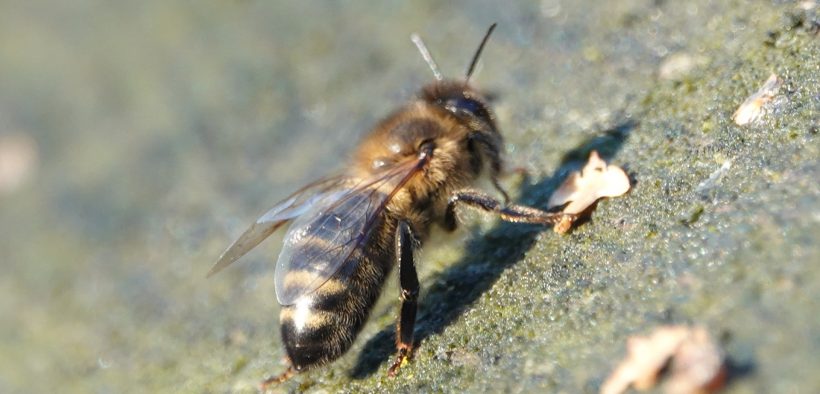Loophole ‘Emergency’ Use of Bee-Toxic Sulfoxaflor Approved During Pollinator Week

The EPA regularly utilizes the “emergency exemption” rule to circumvent enacted restrictions on pesticide use.
(Beyond Pesticides) On June 17, 2019, the Environmental Protection Agency (EPA) once again approved “emergency” uses of sulfoxaflor, a bee-toxic insecticide, on millions of acres of crops that are attractive to bees. Sulfoxaflor is functionally identical to the neonicotinoid class of systemic pesticides, which are readily absorbed and translocated by the plant, including its pollen and nectar. These insecticides are substantial contributors to the dramatic decline of pollinators and what is now recognized as a global insect apocalypse.
In 2015, beekeepers sued to suspend the use of sulfoxaflor. A year later, in 2016 the chemical’s registration was amended with the specific exclusion of crops such as cotton and sorghum that attract bees, essentially acting as an aromatic draw to poison. EPA regularly utilizes the “emergency exemption” rule under Section 18 of the Federal Insecticide, Fungicide, and Rodenticide Act (FIFRA) to circumvent these restrictions.
The Center for Biological Diversity reports, “Ten of the 11 states have been granted the approvals for at least four consecutive years for the same ‘emergency.’ Five have been given approvals for at least six consecutive years.”
The EPA’s Office of Inspector General (OIG) has recognized the broad misuse of Section 18. A 2018 report from OIG notes that EPA “does not have outcome measures in place to determine how well the emergency exemption process maintains human health and environmental safeguards.” Section 18 is intended to be utilized for unanticipated, urgent, and short-lived pest situations. Instead, it is harnessed as an effective, chronic workaround FIFRA registration and appropriate limits of use.
As Beyond Pesticides promotes “Pollinator Week”—a collective effort to focus on creatures vital to our environment and food systems—it is disheartening to report this continued wrongdoing from the branch of government charged with protecting the environment.
“The Trump EPA is allowing potentially catastrophic harm to imperiled insect populations,” says Lori Ann Burd, environmental health director at Center for Biological Diversity. “It’s hard to imagine how much more evidence could possibly be needed for the agency to wake up to the damage they are causing.”
Section 18 is not the only loophole used as a vector for the use of toxic pesticides and the profit of big agrichemical companies.
Sulfoxaflor and neonicotinoids are used as a chemical spray, but they can also be applied as a seed coating that permeates the plant as it grows and causes indiscriminate poisoning. In March, Beyond Pesticides created an action regarding this topic, stating, “EPA is misusing a regulatory loophole—the ‘treated articles exemption’—to allow systemic insecticides to be used in mass quantities, without regulating or labeling them as required under the Federal Insecticide, Fungicide and Rodenticide Act (FIFRA). EPA does not currently assess adverse effects on the environment and public health wrought by widespread use of neonicotinoid insecticides delivered through seeds coated with the insecticides, resulting in widespread exposure to one of the most environmentally damaging classes of chemicals on the market.”
Spread the word about treated seeds and the impact of systemic insecticides by sharing Beyond Pesticides’ animated short Seeds that Poison. Further, you can tell your Congressional delegation to pressure EPA to close the “emergency” loophole in Section 18 and also fully regulate treated seeds.
All unattributed positions and opinions in this piece are those of Beyond Pesticides.















